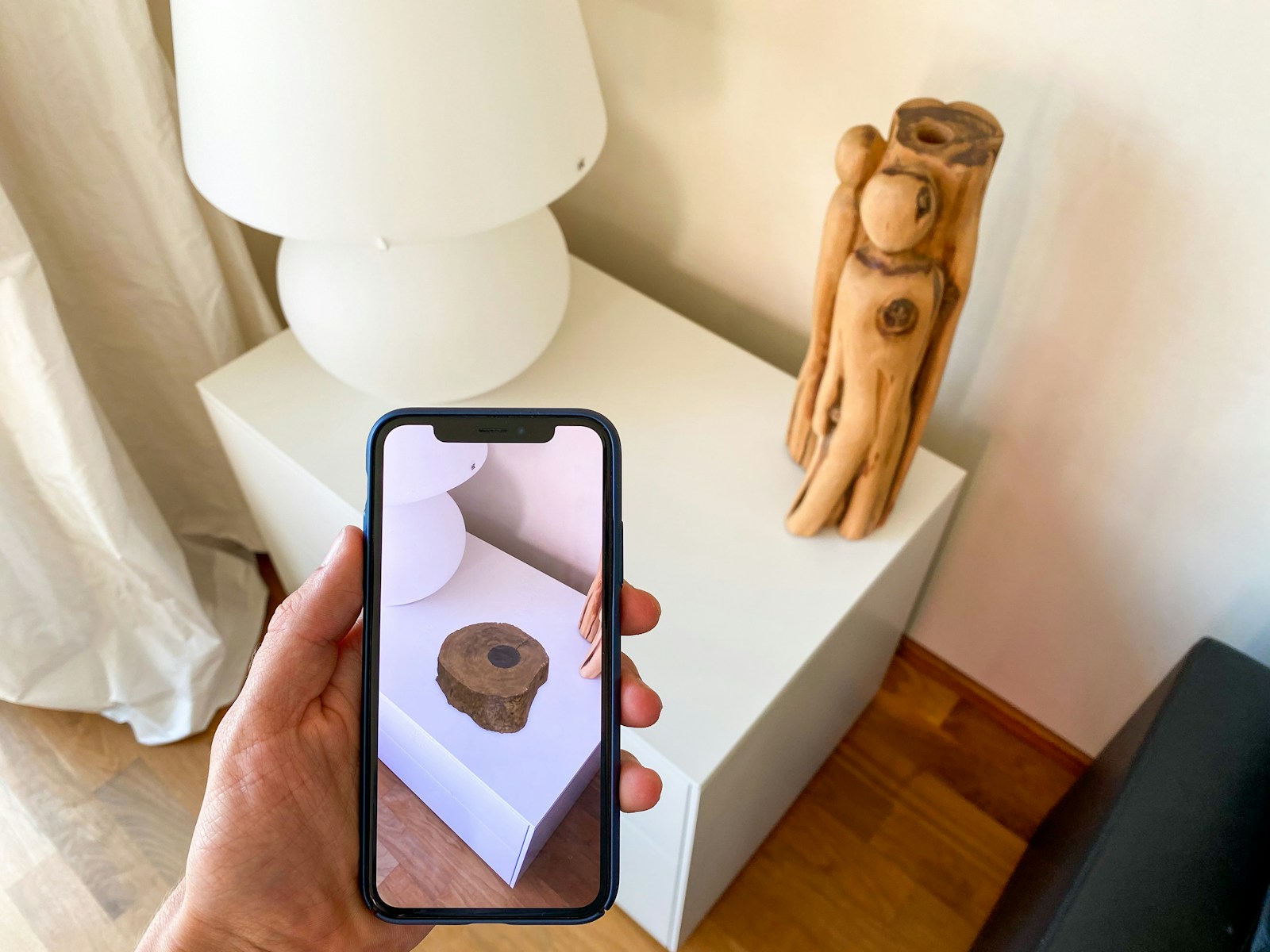TL;DR:
– **What is an Augmented Reality Home?**
– Definition and concept of integrating AR technology into homes for an immersive living experience.
– Benefits include enhanced convenience, entertainment, and connectivity.
– **Interactive Holographic Interfaces**
– Explore holographic technology for interactive user interfaces in daily life.
– Enhances user experience with innovative applications and personalized interactions.
– **Energy-Efficient Smart Systems**
– Introduction to smart energy solutions within AR homes for sustainability and cost-efficiency.
– Integration of AR technology promotes green living and optimized energy consumption.
– **Personalized Augmented Reality Experiences**
– Tailored customization options offer personalized entertainment and productivity features.
– Transform living spaces into unique environments that suit individual preferences.
– **Future Prospects and Challenges**
– Rising trends in AR home technology showcase futuristic advancements.
– Potential obstacles include adoption issues and ethical concerns surrounding privacy and data security.
Introduction
Imagine stepping into a world where your home is not just a physical space but a dynamic, ever-evolving environment that adapts to your needs and desires. Welcome to the realm of the Augmented Reality Home, where innovation and sustainability converge to redefine the way we live. In this article, we will delve into the awe-inspiring realm of Augmented Reality Homes and explore five revolutionary features that are set to shape the future of living. From interactive holographic interfaces to energy-efficient smart systems, the Augmented Reality Home promises a glimpse into a futuristic lifestyle that is as sustainable as it is spectacular. Let’s embark on this journey together and witness the marvels that await in our homes of tomorrow.
What is an Augmented Reality Home?
Augmented Reality (AR) homes represent the cutting edge of sustainable living, integrating advanced technology into our daily environments. These futuristic homes harness the power of AR technology to create a fully immersive and interactive living experience. By overlaying digital information onto the physical world, AR homes revolutionize how we interact with our living spaces.
Definition and Concept
An Augmented Reality Home is a dwelling that incorporates AR technology to enhance the environment with digital elements. This includes features such as interactive displays, holographic interfaces, and personalized experiences that cater to the resident’s needs and preferences.
How AR Technology is Integrated into Homes
AR technology is seamlessly integrated into these homes through smart devices, sensors, and interactive interfaces. From smart mirrors that display personalized information to AR-enhanced furniture that adapts to users’ preferences, the possibilities are endless.
Benefits of Living in an Augmented Reality Home
Living in an AR home offers numerous benefits, including enhanced comfort, energy efficiency, and personalization. With AR, residents can control their environment, access information easily, and enjoy a truly immersive living experience that is tailored to their individual needs.
Interactive Holographic Interfaces
Imagine a home where your interactions are not limited to physical devices but extend into the realm of holographic technology. Interactive holographic interfaces offer a surreal yet practical way to engage with your surroundings. By projecting three-dimensional images and interfaces into your living space, this technology revolutionizes the way you interact with your home environment.
Overview of holographic technology
– Holographic technology uses light diffraction to create three-dimensional images that appear to be floating in space.
– These images can be projected onto various surfaces, allowing for interactive communication and visual displays.
Applications in daily life
– Interactive holographic interfaces can be used for virtual assistants, entertainment systems, interactive learning experiences, and virtual shopping.
– They provide a futuristic and immersive way to control smart home devices, access information, and enhance communication.
Potential impact on user experience
– The use of holographic interfaces can greatly enhance user engagement and make interactions more intuitive and natural.
– By merging physical and digital elements seamlessly, this technology opens up endless possibilities for personalized and user-friendly experiences in the home environment.
Energy-Efficient Smart Systems
Introduction to Smart Energy Solutions
In the realm of futuristic homes, energy-efficiency takes center stage with the integration of smart systems. These intelligent solutions optimize energy consumption by monitoring and adjusting usage in real-time. From lighting and heating to appliances and air conditioning, smart systems play a crucial role in minimizing waste and reducing costs.
Integration of AR Technology for Energy Efficiency
Augmented Reality (AR) technology further enhances energy efficiency by providing users with real-time data and control over their energy consumption. With AR interfaces, residents can visualize their energy usage, set preferences, and automate energy-saving protocols. This seamless integration of AR enhances user awareness and empowers them to make informed decisions on sustainable living practices.
Benefits of Sustainable Living in an AR Home
Living in an AR home equipped with energy-efficient smart systems offers various benefits. Not only does it lead to reduced utility bills and environmental impact, but it also promotes a more comfortable and convenient lifestyle. By embracing sustainable practices facilitated by AR technology, residents can enjoy a harmonious blend of cutting-edge innovation and environmental responsibility.
Personalized Augmented Reality Experiences
Augmented reality has moved from the realm of science fiction into everyday life and found profound applications in modern homes, providing homeowners with a more enriched and tailored living experience. By creating personalized augmented reality environments, homeowners can customize their living spaces to suit their taste, mood, and lifestyle.
Customization Options for Users
The flexible nature of AR technology allows for a plethora of customization options. Depending on personal preferences, homeowners can manipulate their spaces to feature soothing landscapes one day, animated scenes the next, or motivational settings for fitness routines. The possibilities are endless- from interior design choices to lighting effects, whatever users envision can become their reality.
Enhancing Entertainment and Productivity
Aside from décor, AR homes offer expansive opportunities for enhancing entertainment and productivity. For instance, entire walls can transform into immersive gaming screens, interactive workout lessons, or dynamic workstations, providing family members with diverse, interactive experiences that simultaneously excite and engage. This fusion of technology and reality holds enormous potential to elevate our home-life experiences.
Creating a Tailored Living Environment
AR home technology enables homeowners to create their ideal living environments, reflecting their personality and complementing their lifestyle. It offers a responsive and adaptable space that can morph and change according to users’ needs, desires, and mood swings. The light intensity, room temperature, sound ambiance- every detail can be fine-tuned, creating a living space that truly feels like home. The augmented reality home concept ushers homeowners into a future where they can express their individuality more profoundly.
Future Prospects and Challenges
As we look ahead to the future of Augmented Reality Homes, exciting possibilities and potential challenges come into focus. The emerging trends in AR home technology are paving the way for a new era of interactive and sustainable living. Integrating cutting-edge AR features into our homes holds great promise for enhancing our daily experiences. However, along with these advancements come obstacles that must be addressed to ensure a smooth transition to this futuristic way of living.
Emerging Trends in AR Home Technology
The future of AR homes is bright, with innovative technologies continuously evolving to offer enhanced interactive experiences. From interactive holographic interfaces to personalized AR applications, the possibilities are endless. As more smart systems are integrated, we can expect to see a seamless blend of digital and physical environments that cater to our individual needs and preferences. This trend towards a personalized and immersive living experience is set to revolutionize the way we interact with our surroundings.
Potential Obstacles to Widespread Adoption
Despite the promising developments in AR home technology, there are challenges that need to be overcome for widespread adoption. One of the main obstacles is the cost of implementing these advanced systems, which may be a barrier for many homeowners. Additionally, concerns about data privacy and security in a connected AR environment pose significant challenges that must be addressed. As we move towards a more digitally integrated lifestyle, ensuring the safety and protection of personal information will be crucial in gaining consumer trust.
Ethical Considerations and Privacy Concerns
With the integration of AR technology into our homes, ethical considerations and privacy concerns become increasingly important. As our living spaces become more interconnected and data-driven, ensuring the ethical use of personal information is essential. Issues like data security, consent for data collection, and transparency in AR applications need to be carefully addressed to protect users’ privacy. Finding the right balance between technological advancement and ethical responsibility will be key in shaping the future of AR homes.
The future of Augmented Reality Homes holds great potential, but it also brings challenges that need to be navigated carefully. By staying informed about emerging trends, addressing obstacles to adoption, and prioritizing ethical considerations, we can create a future where interactive and sustainable living is seamlessly integrated into our daily lives. Let’s explore the transformative possibilities that AR technology offers and work towards a future where our homes are not just smart but truly immersive and personalized.
Conclusion:
In the realm of Augmented Reality Home innovations, these 5 groundbreaking features propel us toward a futuristic living experience. From interactive furniture to immersive virtual tours, the potential for AR homes is limitless. Embracing the Augmented Reality Home concept opens doors to unprecedented convenience and creativity. Delve deeper into the world of Augmented Reality Home to unlock the possibilities of smart living redefined. Explore more on Augmented Reality Home beyond the horizon and redefine your living experience with cutting-edge technology.










